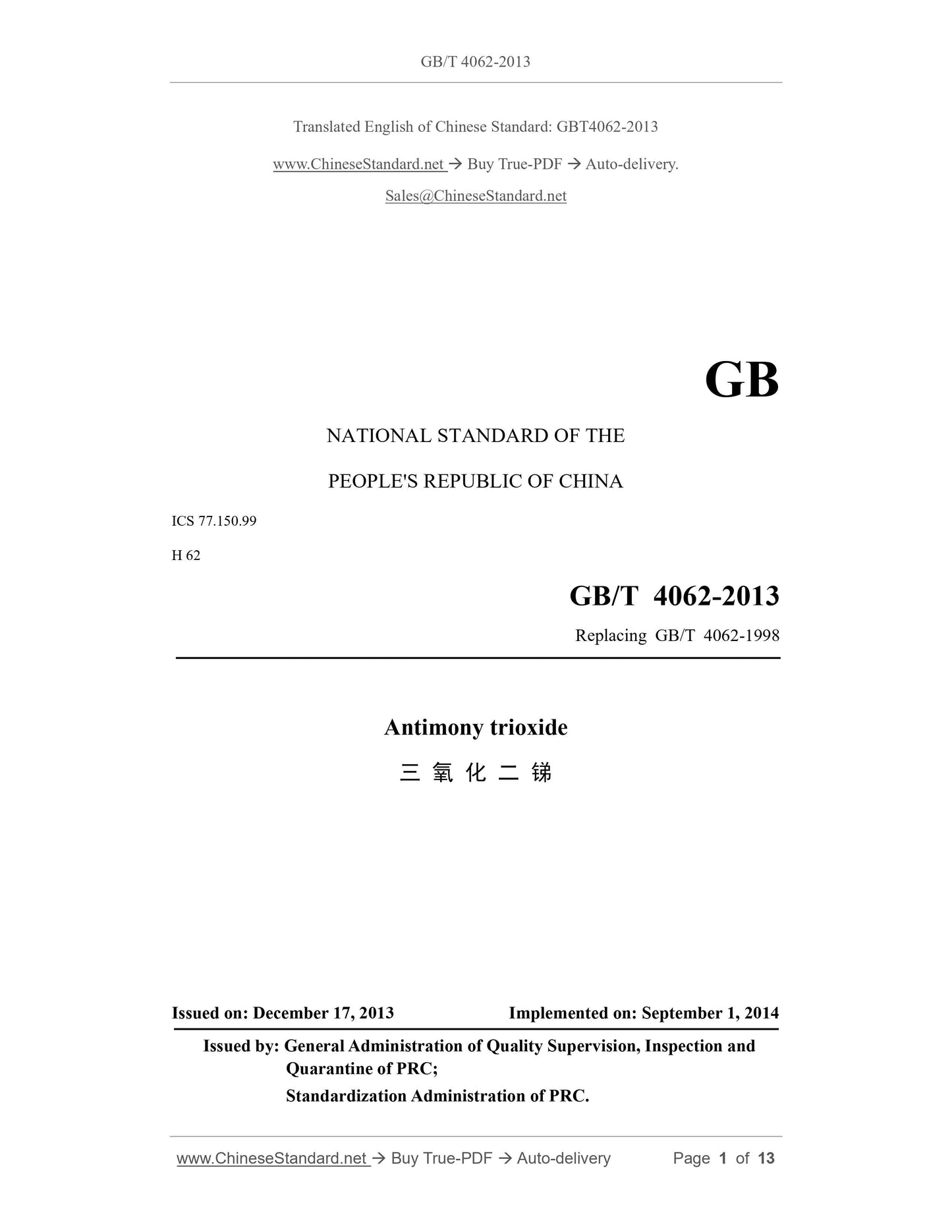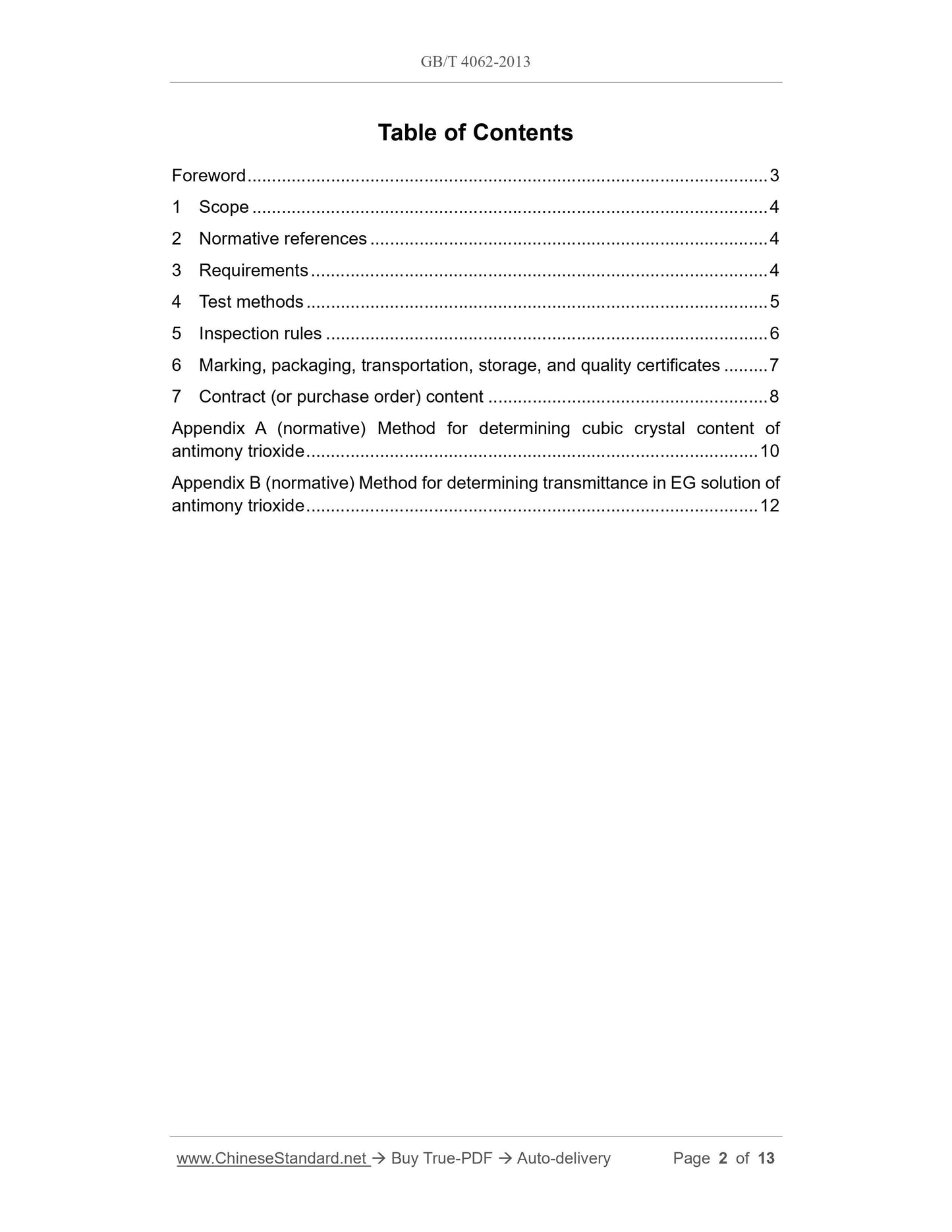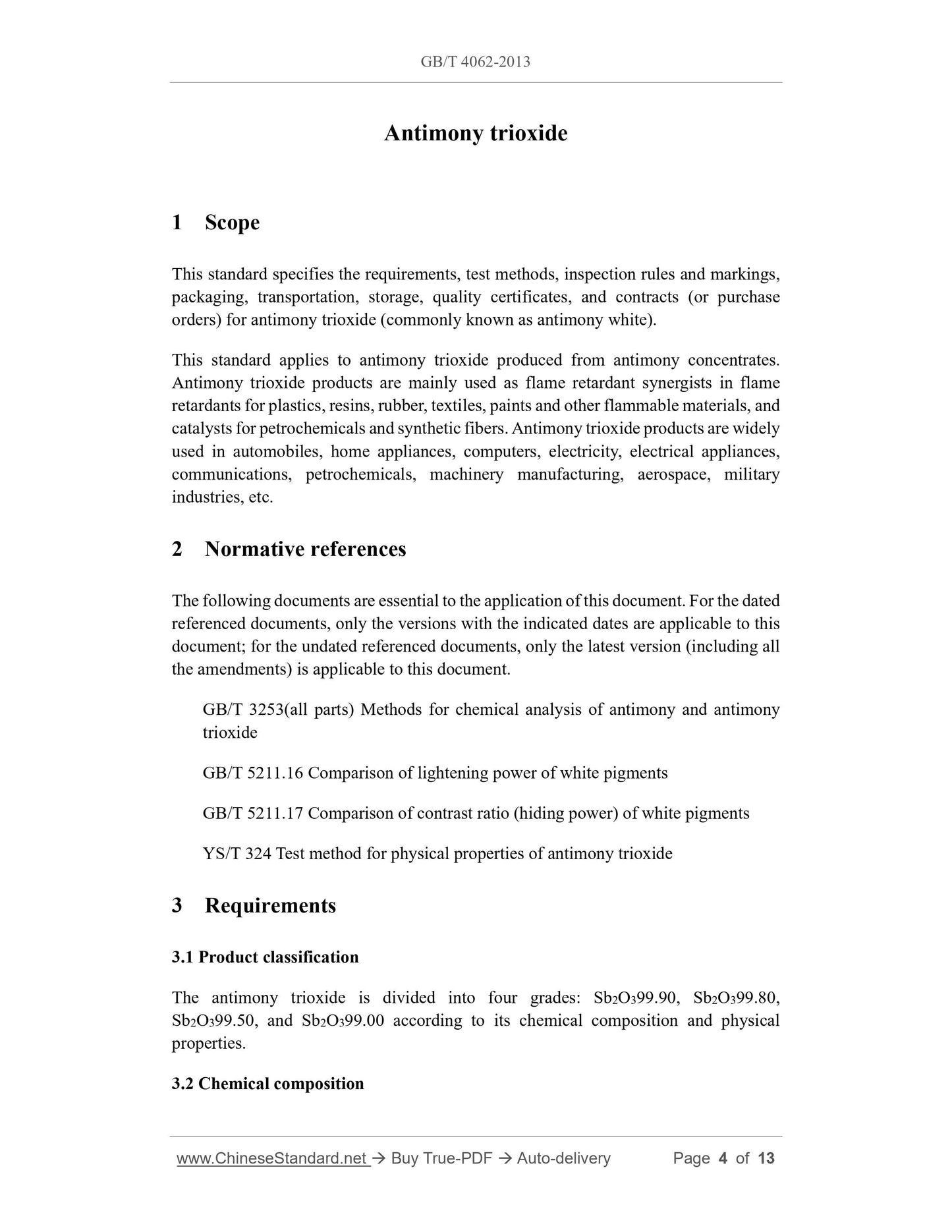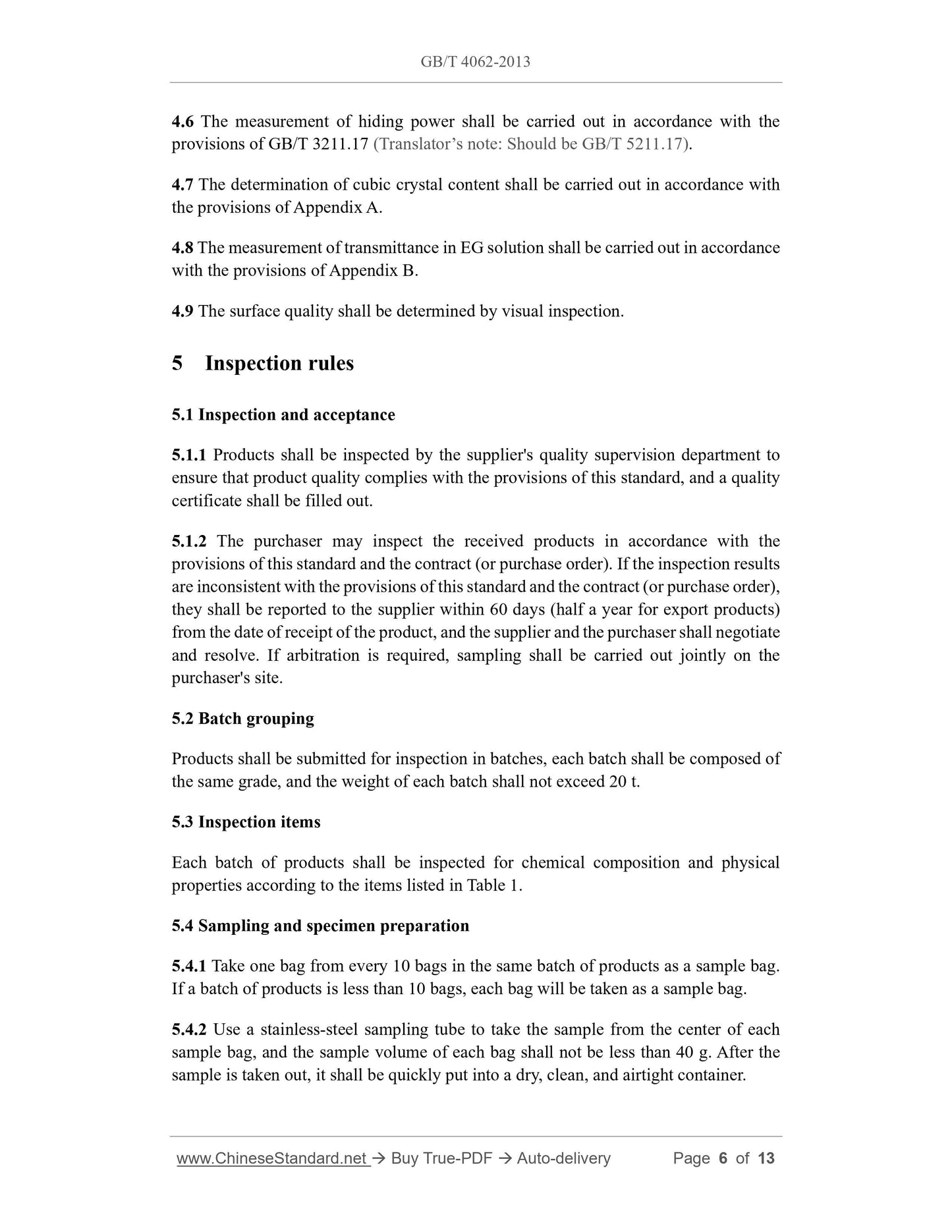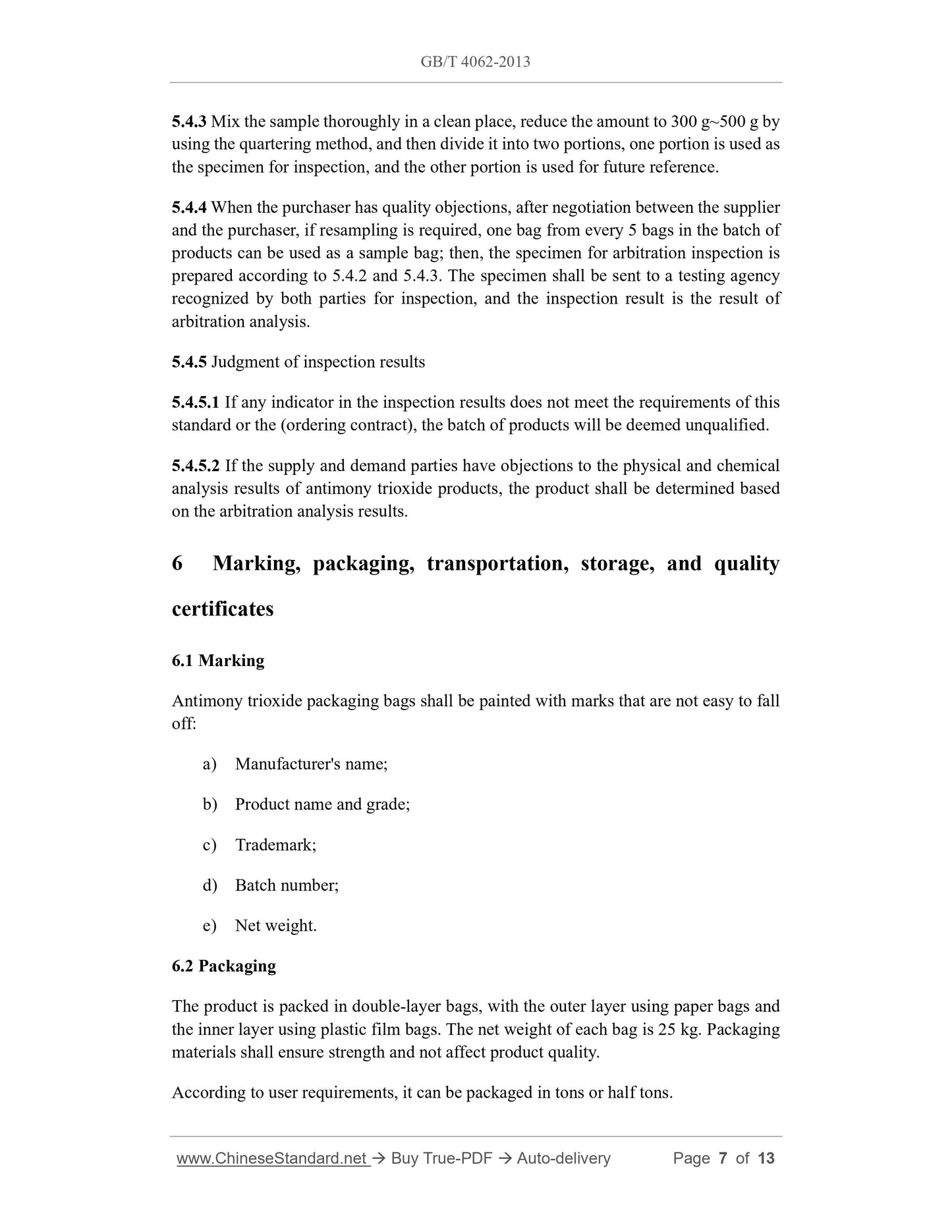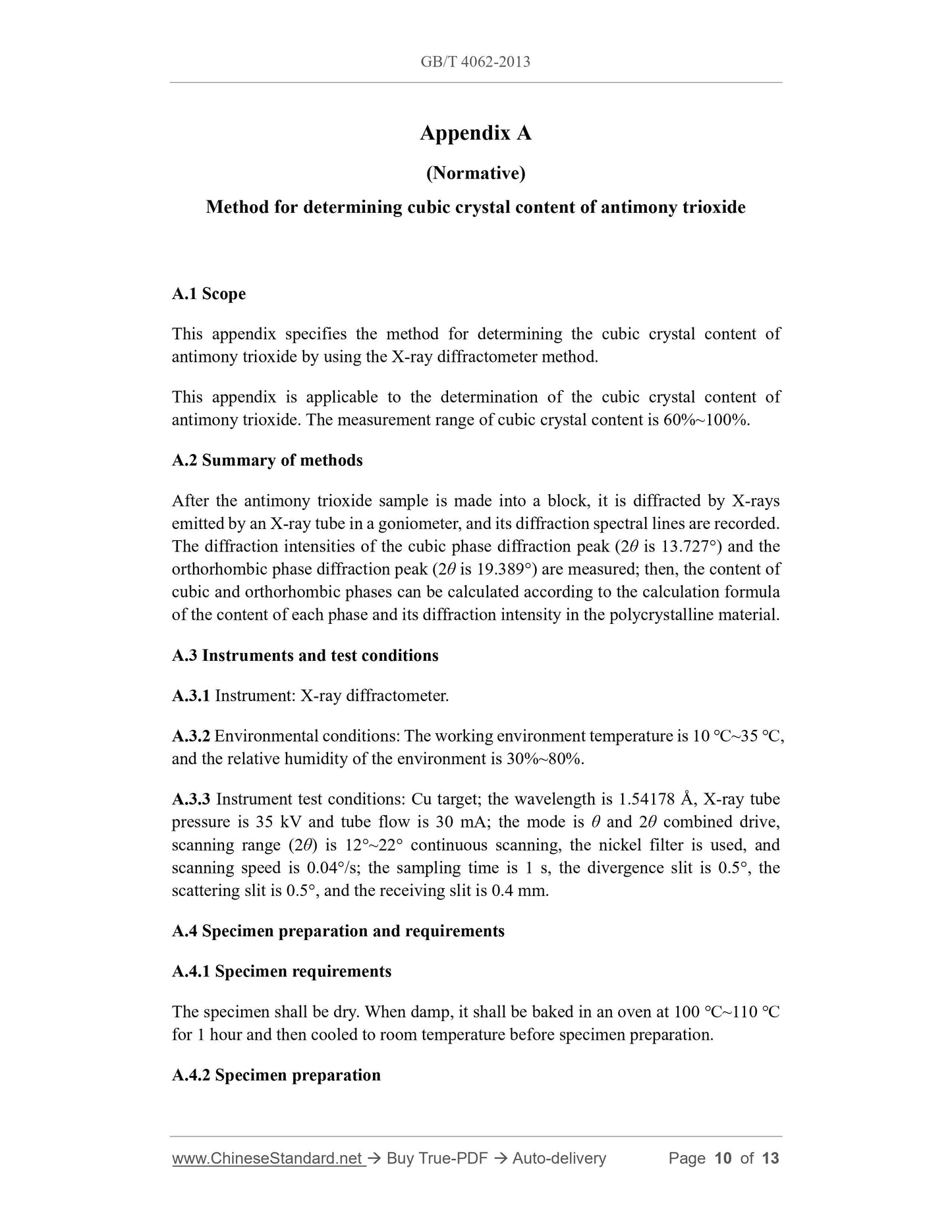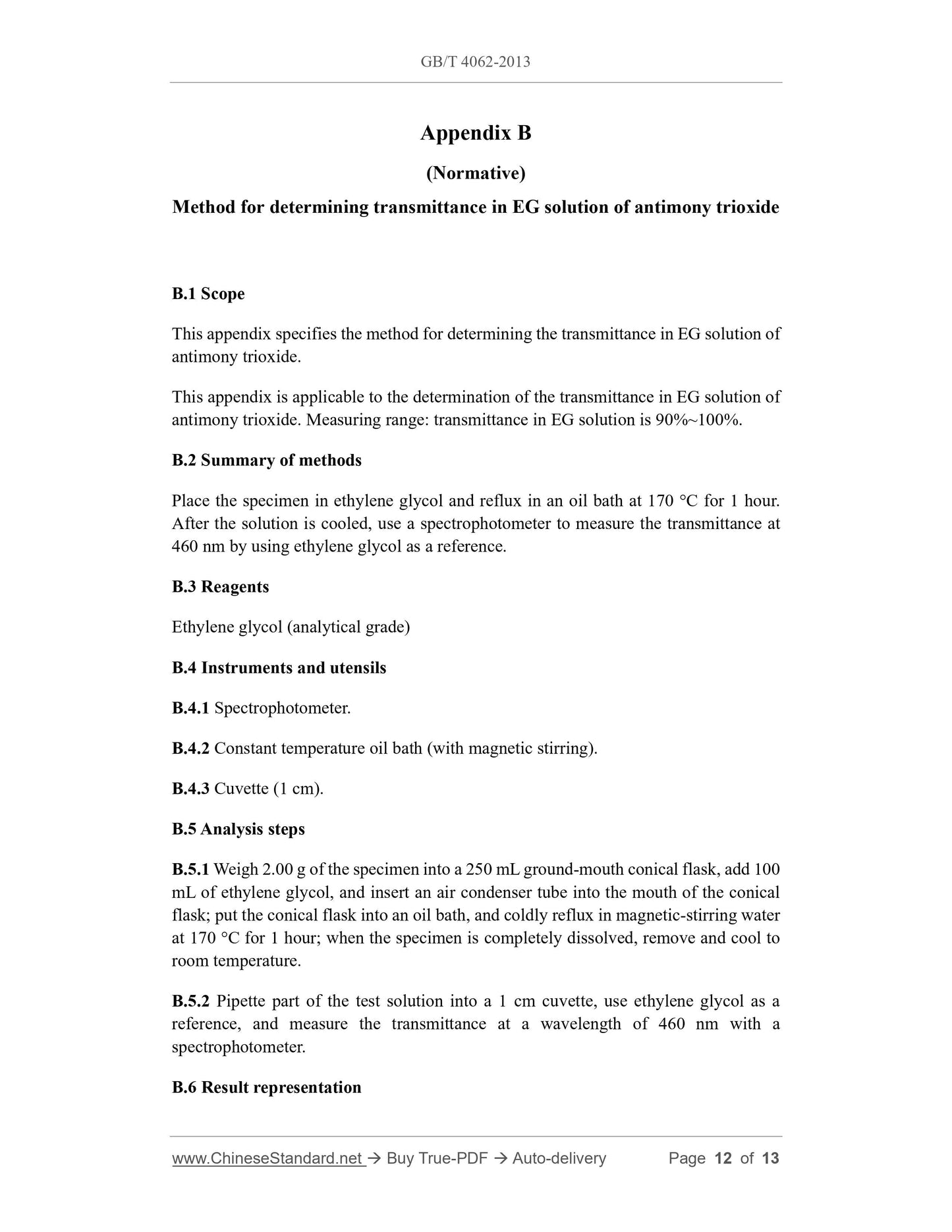1
/
of
7
www.ChineseStandard.us -- Field Test Asia Pte. Ltd.
GB/T 4062-2013 English PDF (GB/T4062-2013)
GB/T 4062-2013 English PDF (GB/T4062-2013)
Regular price
$220.00
Regular price
Sale price
$220.00
Unit price
/
per
Shipping calculated at checkout.
Couldn't load pickup availability
GB/T 4062-2013: Antimony trioxide
Delivery: 9 seconds. Download (and Email) true-PDF + Invoice.Get Quotation: Click GB/T 4062-2013 (Self-service in 1-minute)
Newer / historical versions: GB/T 4062-2013
Preview True-PDF
Scope
This standard specifies the requirements, test methods, inspection rules and markings,packaging, transportation, storage, quality certificates, and contracts (or purchase
orders) for antimony trioxide (commonly known as antimony white).
This standard applies to antimony trioxide produced from antimony concentrates.
Antimony trioxide products are mainly used as flame retardant synergists in flame
retardants for plastics, resins, rubber, textiles, paints and other flammable materials, and
catalysts for petrochemicals and synthetic fibers. Antimony trioxide products are widely
used in automobiles, home appliances, computers, electricity, electrical appliances,
communications, petrochemicals, machinery manufacturing, aerospace, military
industries, etc.
Basic Data
| Standard ID | GB/T 4062-2013 (GB/T4062-2013) |
| Description (Translated English) | Antimony trioxide |
| Sector / Industry | National Standard (Recommended) |
| Classification of Chinese Standard | H62 |
| Classification of International Standard | 77.150.99 |
| Word Count Estimation | 10,124 |
| Older Standard (superseded by this standard) | GB/T 4062-1998 |
| Quoted Standard | GB/T 3253.1; GB/T 3253.2; GB/T 3253.3; GB/T 3253.4; GB/T 3253.5; GB/T 3253.6; GB/T 3253.7; GB/T 3253.8; GB/T 3253.9; GB/T 3253.10; GB/T 3253.11; GB/T 5211.16; GB/T 5211.17; YS/T 324 |
| Regulation (derived from) | National Standards Bulletin No. 25 of 2013 |
| Issuing agency(ies) | General Administration of Quality Supervision, Inspection and Quarantine of the People's Republic of China, Standardization Administration of the People's Republic of China |
| Summary | This standard specifies the antimony trioxide (commonly known as antimony white) requirements, test methods, inspection rules and signs, packaging, transportation, storage and quality certificates and contracts (or purchase orders). This standard applies |
Share
